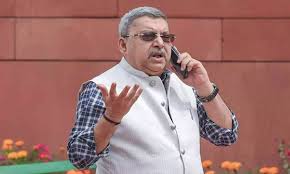Why Mamata Banerjee allowed old lieutenant Kalyan Banerjee to quit as Chief Whip amid his feud with Mahua Moitra

Veteran Trinamool Congress (TMC) MP Kalyan Banerjee resigned as the Chief Whip in the Lok Sabha, a move that sparked interest and debate across political circles. The resignation followed a very public feud with fellow TMC MP Mahua Moitra. While political differences within parties are not new, Mamata Banerjee’s decision to accept Kalyan’s resignation reveals a calculated effort to protect party unity and discipline.
The Public Feud That Sparked It All
Kalyan Banerjee and Mahua Moitra had been clashing behind the scenes, but things escalated quickly. Moitra accused Banerjee of using inappropriate language and displaying sexist behavior. In response, Banerjee made equally scathing remarks. The argument turned personal and spilled into the public domain, grabbing media attention.
The timing was especially bad. TMC is preparing for significant battles ahead, both at the state and national levels. Mamata Banerjee, known for her strong leadership style, had to intervene quickly to prevent further damage.
Mamata’s Response: Swift and Strategic
1. Preserving Party Unity
Mamata Banerjee knows that public infighting can cost votes. Internal discord can damage a party’s credibility, especially when elections are near. By allowing Kalyan to step down, she sent a clear message: unity matters more than seniority or personal loyalty.
2. Discipline Comes First
Even though Kalyan Banerjee is a trusted old guard, Mamata didn’t hesitate. She prioritized discipline over sentiment. By doing so, she reminded everyone in the party that no one is above party rules—not even long-serving MPs.
3. Cooling Down the Conflict
Instead of punishing one side, Mamata took a neutral approach. She didn’t single out Mahua or Kalyan in public. But removing Kalyan from an official role helped de-escalate the feud. It allowed both leaders to cool off while protecting the party’s image.
A Needed Shake-up in the Parliamentary Team
4. Improving Coordination in the Lok Sabha
There had already been concerns about weak coordination in Parliament. Senior MPs like Sudip Bandyopadhyay were missing due to health issues. Kalyan, as Chief Whip, was responsible for maintaining order and strategy. Mamata’s decision to accept his resignation gave her the opportunity to reorganize the team.
5. Promoting New Leadership
At the same time, Mamata elevated her nephew, Abhishek Banerjee, as the new TMC leader in the Lok Sabha. This move indicated a shift toward younger leadership. She also appointed Kakoli Ghosh Dastidar as the new Chief Whip and Satabdi Roy as Deputy Leader. Both are experienced leaders with a reputation for discipline and loyalty.
What This Means for TMC Going Forward
The leadership change is about more than resolving a personal feud. Mamata used the moment to reinforce key messages: internal order, generational change, and strategic focus. These steps are crucial as TMC prepares for the next general election and seeks to play a stronger national role.
Her statement, “No individual is bigger than the party,” summed up the spirit behind the decision. It was a reminder to all party members that the collective good comes first.
Conclusion
Kalyan Banerjee’s exit as Chief Whip may seem like a fallout of a personal argument, but it was much more than that. Mamata Banerjee made a smart and strategic call to protect her party’s image, restore discipline, and push for generational change.
By acting swiftly, she avoided a prolonged power struggle and sent a powerful message: TMC will not tolerate distractions, and party unity is non-negotiable.






